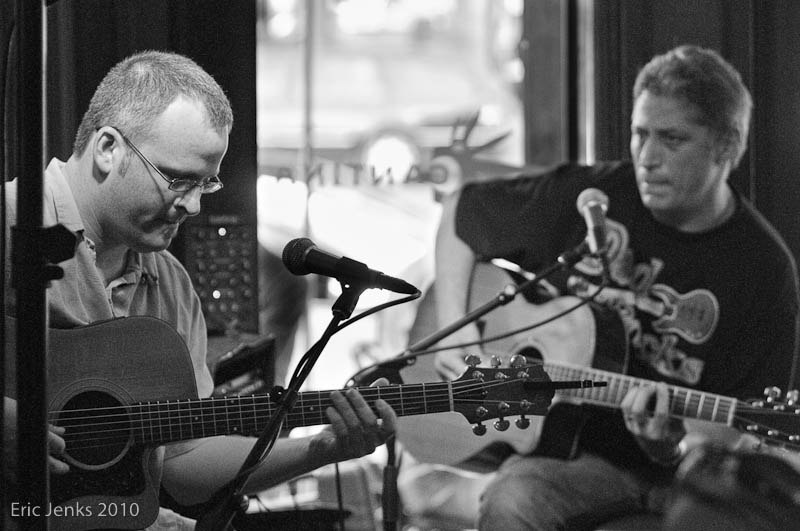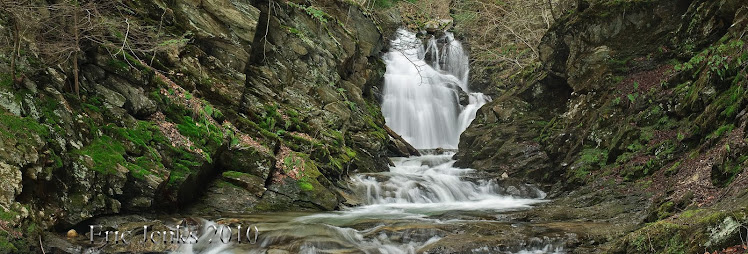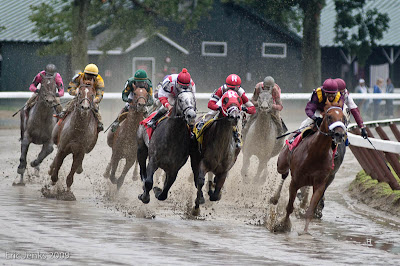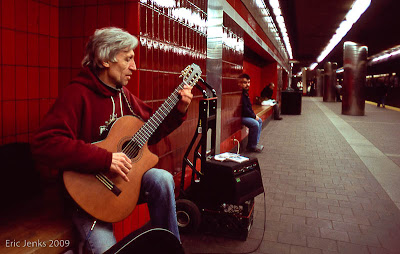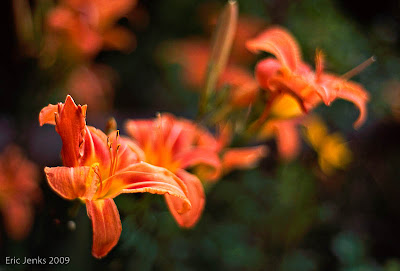One of my favorite musician photos, that I shot in the Boston subway system in February 2009. I used an F100 body - arguably a very expensive piece of kit for its day, though relatively cheap now. But the lens; that's a different story. The lens is an old tamron adaptall manual focus jobber, and costs about $100 if you shop around, maybe even less. At 24mm and f2.5 it's faster than Nikon's 24mm f2.8 yet hundreds less in terms of cost. It's a sharp little bugger without much distortion too. I love it for shooting in lowlight, landscapes and more. A good all around lens. I actually got it for free from a friend.
These next two shots prove the point as well
These two shots are with the Nikon 135 f3.5, Non ai. The first is with an old Nikon FM, and moderately high ISO (400) film. The second is with the f100 again, though honestly the body doesn't make a big difference here. Both are manually metered, to compensate for lighting and errors that built in meters can have with dark and light colors.
My point here is this - you don't have to spend a fortune on gear to get good results. It's applicable with modern digital camera bodies, old film gear and anything in between. Some of my favorite lenses date all the way back to the mid thirties, and cost me less than $100.
I rarely spend thousands of dollars on gear. Do I? Yes there are occasions where for me to get a shot, I pull out a lens that I've spent several hundred dollars on, and my digital bodies have ranged in price from $900-$1400. Ouch. Still haven't hit that $1000 mark with a lens thankfully. However some of my favorite shots are done with old lenses, or with modern lenses that I haven't spent a boatload on. I advocate endlessly for beginners and old timers alike to try out these old lenses before going to the modern super zoom, or other consumer lens of today.
Why primes over zooms you may ask? Because
a. That 135 f3.5 is plenty fast for daylight and landscape shooting, yet weighs a ton less than my 80-200 f2.8. Same goes for the 24mm versus my 17-35 f2.8. You can only carry those two big lenses so far before your body starts crying out from the strain. Hour after hour, day after day, it gets to you. Also it's still faster than any kit lens from today as well, offering more control over depth of field. Same goes for getting the wonderful plastic fantastic 50mm f1.8 AF. It's cheap used (I paid a whopping $30 for mine when I had it, though now they're around $80-100) and the low light AF and shutter speed of that lens compared to a kit 18-55 is incredible. Once you get used to having a sharp lens that lets you control depth of field and shoot at night, you'll never turn back.
b. I believe that having a single focal length to deal with will teach a beginner more than a zoom. You learn so much more about composition using a single lens where you're forced to walk around, look at different angles and consider the perspective in comparison to the lazy attitude most people have with zooms. One focal length eliminates a variable, allowing you to focus on shutter speed, aperture and ISO. If you leave your ISO set to one setting, this gets you down to two variables to deal with. Much better than four when you're trying to learn the basics of photography isn't it?
c. They're fun! Really. Going out for a day to shoot with a bag that weighs less than 20 lbs is great. I feel free and enjoy myself a lot more. At the same time however, I know I'm using something that will give me great image quality and a look that can't be matched by the zoom happy crowds of today.
d. They're cheap! Have I said that enough yet? They're stinking cheap for the cost to function ratio, and let you try a whole new field of photography in comparison to modern kit zooms. Old manual lenses do lose a bit of use on some modern digital cameras. Nikon, Olympus and Pentax however all share some functionality with their older MF lenses. Canon can take a lot of other lenses from different manufacturers (Nikon and Pentax for example) but aren't backward compatible with their own MF lenses. While you may lose metering, you can guess, use an external meter or use the sunny 16 rule and get fairly accurate results. With modern DSLRs, you can always check your exposure with the histogram and the LCD screen on the back. You feel a bit like you're naked the first time shooting without a meter. It's exhilarating really. Almost like streaking across a busy street. Not that I've done that or anything =oP. You'll start reading light more, thinking about the scene and how the shadows and highlights will change the composition. It's a great thing to know.
(P.S. Old film cameras are cheap!!! You can pick them up for a song, load them with film and shoot to your hearts content, and still have hundreds left in the bank in comparison to the cost of a good digital. Give it a try, you might be surprised at the results).
So folks give it a shot! Go out and shoot with something that costs less than a $100. Live on the edge and go naked through the streets (figuratively of course.) Enjoy the art, not the gear.
From the Nifty fifty f1.8 wide open. I now shoot with a 50 f1.4 AF, but only because I paid the whopping price of $80 for it.
Eric

